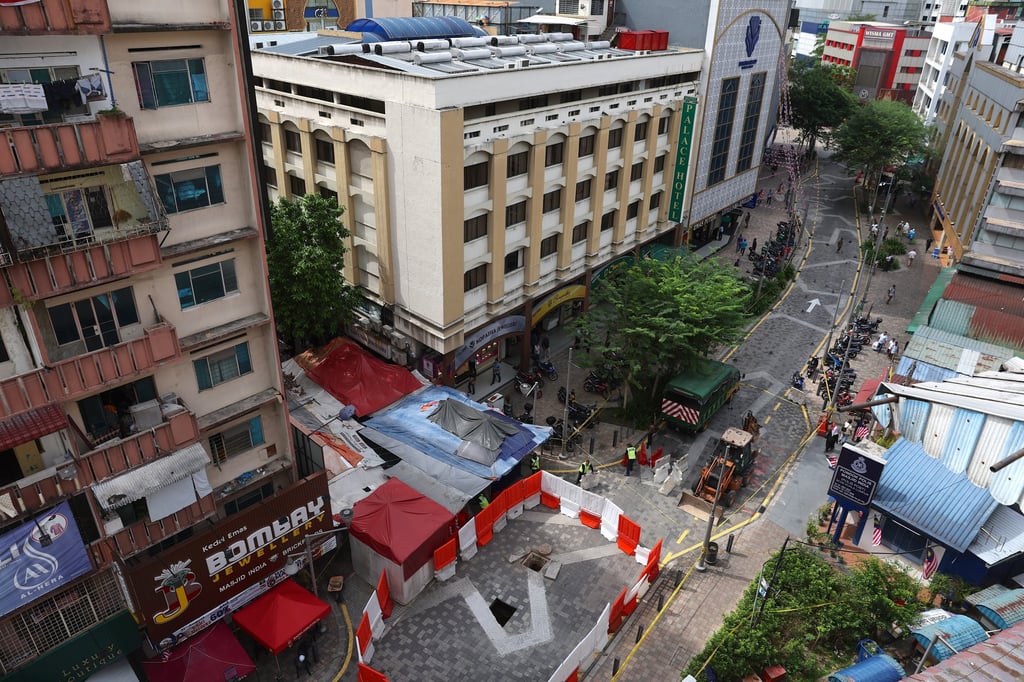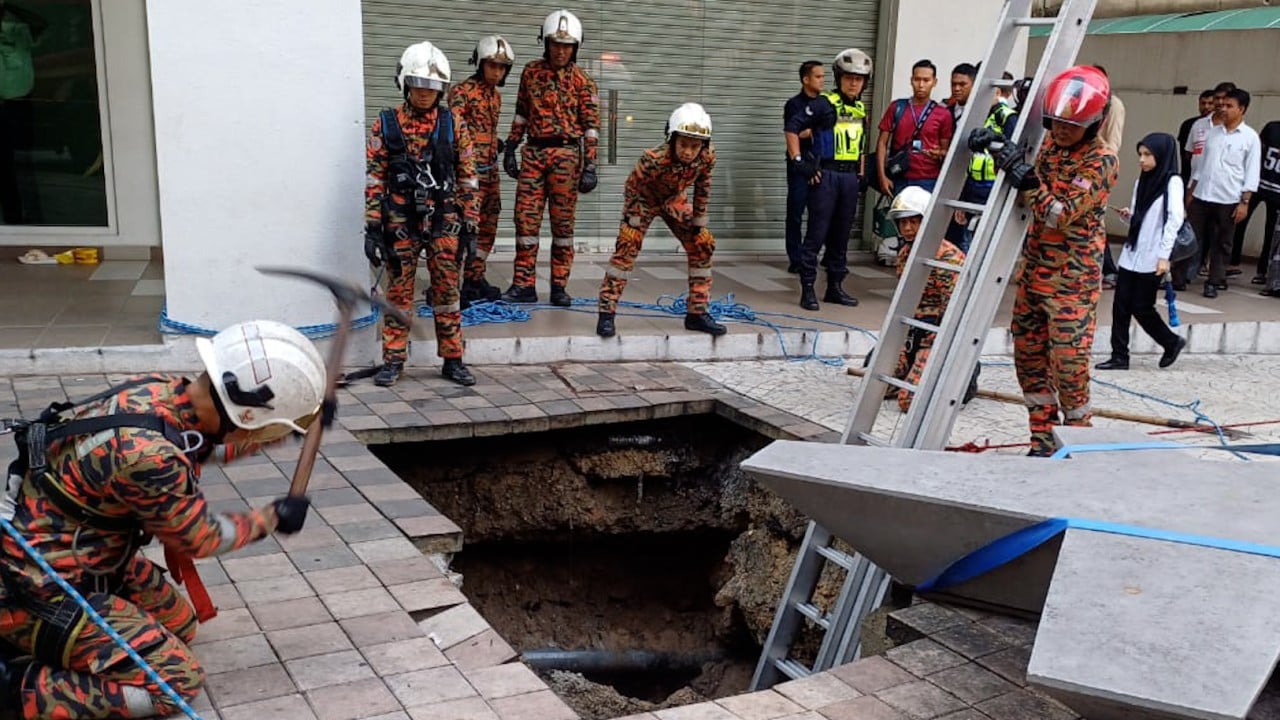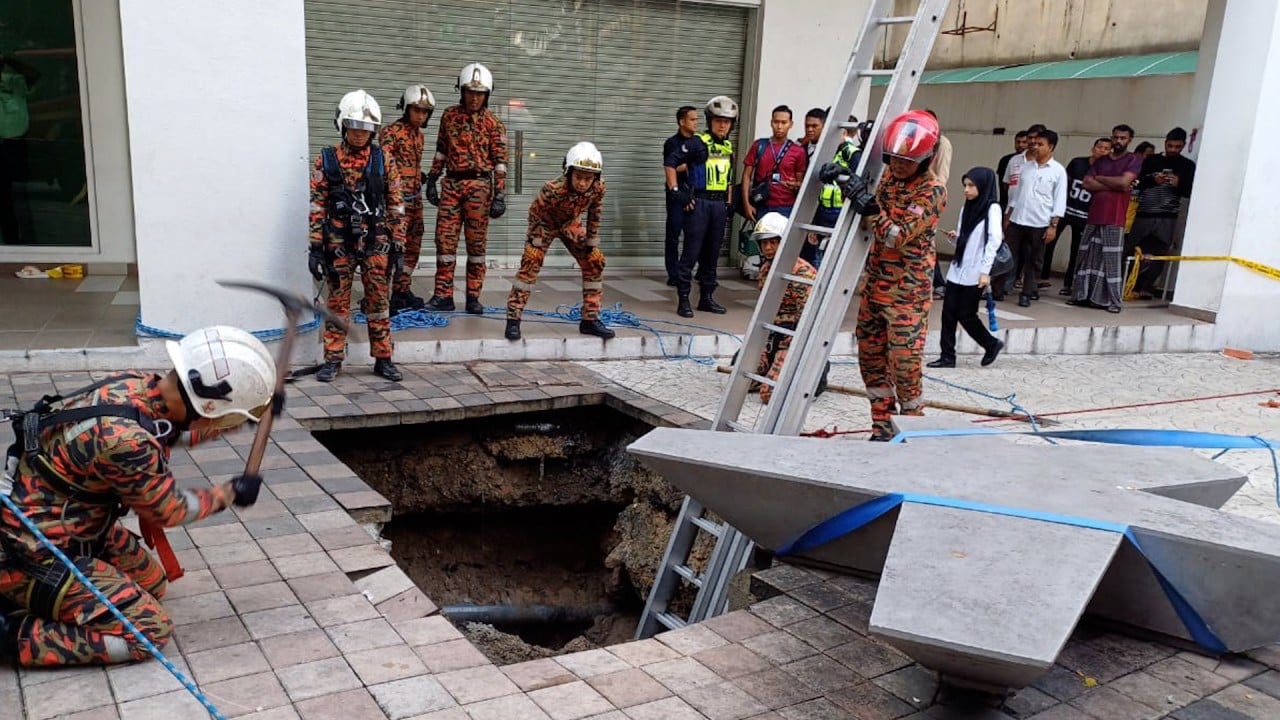Search teams have been working round the clock in Malaysia’s capital Kuala Lumpur over the past week, in a scramble to locate an Indian tourist who fell down an eight-metre-deep sinkhole in a freak accident in the heart of the city.
CCTV footage of the area in the busy thoroughfare of Masjid India showed how 48-year-old Vijaya Lakshmi Gali suddenly disappeared on August 23, when the ground collapsed under her feet as she walked just metres behind her family.
The victim and her family were on the last day of a two-month tour of Malaysia, scheduled to fly home to India’s Andhra Pradesh state the next day.
The incident has triggered an outpouring of fear, anger and disbelief among many Malaysians, who have questioned how it could have happened and whether it could have been prevented.
Theories abound about how parts of the city were built on a bedrock of limestone, which a widely cited 2017 study by a local university found to be potentially unstable. The study by Universiti Teknologi Mara also found that the city’s rapid expansion over the past century had caused a dramatic increase in the risk of sinkholes occurring.
The government said on Wednesday that it would carry out an “integrity audit” of the city’s sewerage system in an attempt to determine the root cause of the sinkhole.
This followed earlier news reports that Kuala Lumpur City Hall had on Monday ordered an immediate suspension of all development work, and after a second sinkhole appeared on Wednesday just 50 metres from the site where Vijaya Lakshmi went missing.
Kuala Lumpur Mayor Maimunah Mohd Sharif dismissed the reports, telling reporters on Wednesday that the city hall was “merely putting a comma, not a full stop” to projects.
The government’s public position on the incident has been laser focused – spare no expense to find the victim and study the city’s vast sewer network to find out what was the cause of the sinkhole.
But nobody in authority has made any mention of who should take responsibility for the tragic accident.
A sinkhole appeared in the same area just last year and very close to the current crater where Vijaya Lakshmi fell, according to city police.
There were no casualties in the previous incident, and the previous sinkhole had since been repaired.
But the city, like the rest of Southeast Asia, has been assailed by increasingly frequent adverse weather events. In recent months, Kuala Lumpur has been battered by torrential rain that triggered frequent flash floods and uprooted trees, including one incident where a motorist was crushed to death.
Just days after the sinkhole that swallowed Vijaya Lakshmi appeared, another one cratered a drain in a densely populated residential area just a few kilometres away.

Deputy Prime Minister Fadillah Yusof on Wednesday insisted that the area around Masjid India was safe and assured that the authorities “will check every inch” to find out the cause of the sinkhole.
He also urged “Google experts” to lay off speculating on the incident and to give the authorities space to carry out their investigations and the search for the victim.
That is all well and good. However, those in public office are also duty bound to explain to the public – and taxpayers – who is ultimately culpable for the deadly incident.
Is it the city hall? Is it Indah Water Konsortium that manages the city’s sewage system? Is it the contractor hired to patch the previous sinkhole?
The lack of urgency to put those responsible on the spot runs counter to Prime Minister Anwar Ibrahim’s pledge to push institutional reforms, especially when it is the government that has access to all the information that will point to the right place.
The buck has to stop somewhere, and it needs to stop soon.



